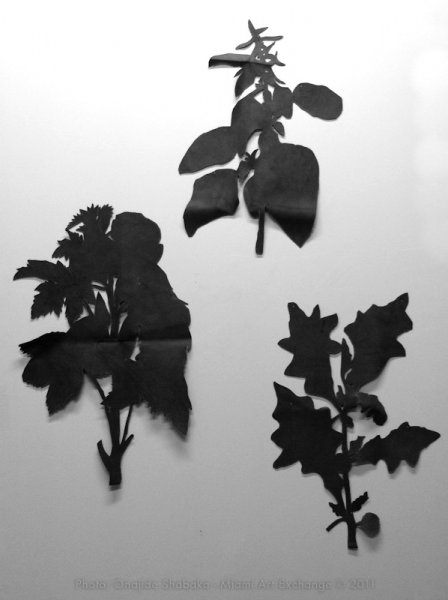
(three untitled mixed media works of ethnobotanic plants)
Synthetic rubber, nylon
Approx. 24 in. each (height)
(The following quote is not directly related to the plants above as such, but part of my ongoing research into ethnobotanicals.)
In a country like Mexico, city-life is markedly different than country-life. The accelerated urban tempo has influenced the loss of oral traditions; children prefer to watch television rather than listen to their grandparents’ stories. In contrast, life in the country promotes family gatherings and traditions as well as intimate contact with nature from which one constantly learns. Today, in many rural areas, the children still join their parents on trips to the field and assist in the cultivation practices. While they accompany and help their elders, they exchange knowledge and ideas about the plants and animals that surround them.
Mexico is a pluricultural country and, in general, its traditional relationship with nature includes the respect and wise use of the natural resources. The deities associated with natural resoures mark strict cultural patterns equivalent to laws in other social environments. One example are the prayers that proceed the gathering of medicinal plants in Santa Catarina del Monte (a state of Mexico), as well as the ritual incantations that are sung upon cutting the maguey plant as part of making pulque, a fermented beverage based upon the plants’ sweet juices. In general, these rituals request permission from Mother Nature to use the resource and promise to only take what is necessary and appropriate (http://www.bgci.org/education/1683/).
